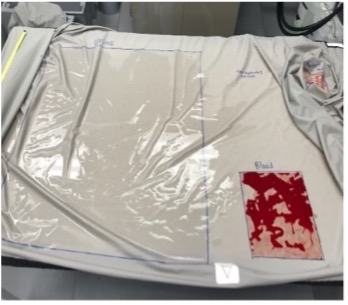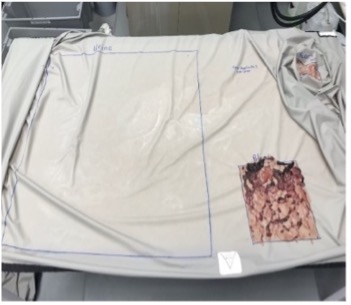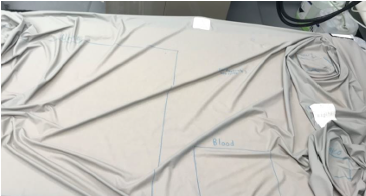
What are the advantages of using a laundry process rather than a manual cleaning process?



Picture 1 soil on barrier before laundering. Picture 2 dried soil on barrier before laundering. Picture 3 barrier surface completely clean of soil after laundering.
The laundry process is easily repeatable and allows you to eliminate pathogens using a variety of means including rinsing, agitation, heat, and chemicals. Moreover, the barrier is brought back to a neutral pH to avoid skin irritation. The process allows you to inspect the barrier on a light table, ensuring that the patient will be lying on an uncompromised surface. Conversely, manual cleaning processes do not achieve a 6-log reduction in pathogens on soft surfaces.60,61 They have also been shown to spread germs from contaminated areas to previously uncontaminated areas,1,38,62 a problem avoided by laundering.
References
1. de Andrade D, Angerami ELS, Padovani CR. A bacteriological study of hospital beds before and after disinfection with phenolic disinfectant. Rev Panam Salud Publica. 2000;7(3):179-184. doi:10.1590/s1020-49892000000300007
38. Hooker EA, Allen S, Gray L, et al. A randomized trial to evaluate a launderable bed protection system for hospital beds. Antimicrob Resist Infect Control. 2012;1(27). doi:10.1186/2047-2994-1-27
60. Cadnum JL, Mana TSC, Jencson A, Thota P, Kundrapu S, Donskey CJ. Effectiveness of a hydrogen peroxide spray for decontamination of soft surfaces in hospitals. Am J Infect Control. 2015;43(12):1357-1359. doi:10.1016/j.ajic.2015.07.016
61. Yeargin T, Fraser A, Huang G, Jiang X. Recovery and disinfection of two human norovirus surrogates, feline calicivirus and murine norovirus, from hard nonporous and soft porous surfaces. J Food Prot. 2015;78(10):1842-1850. doi:10.4315/0362-028X.JFP-14-515
62. Nkemngong CA, Chaggar GK, Li X, Teska PJ, Oliver HF. Disinfectant wipes transfer Clostridioides difficile spores from contaminated surfaces to uncontaminated surfaces during the disinfection process. Antimicrob Resist Infect Control. 2020;9:176. doi:10.1186/s13756-020-00844-0
